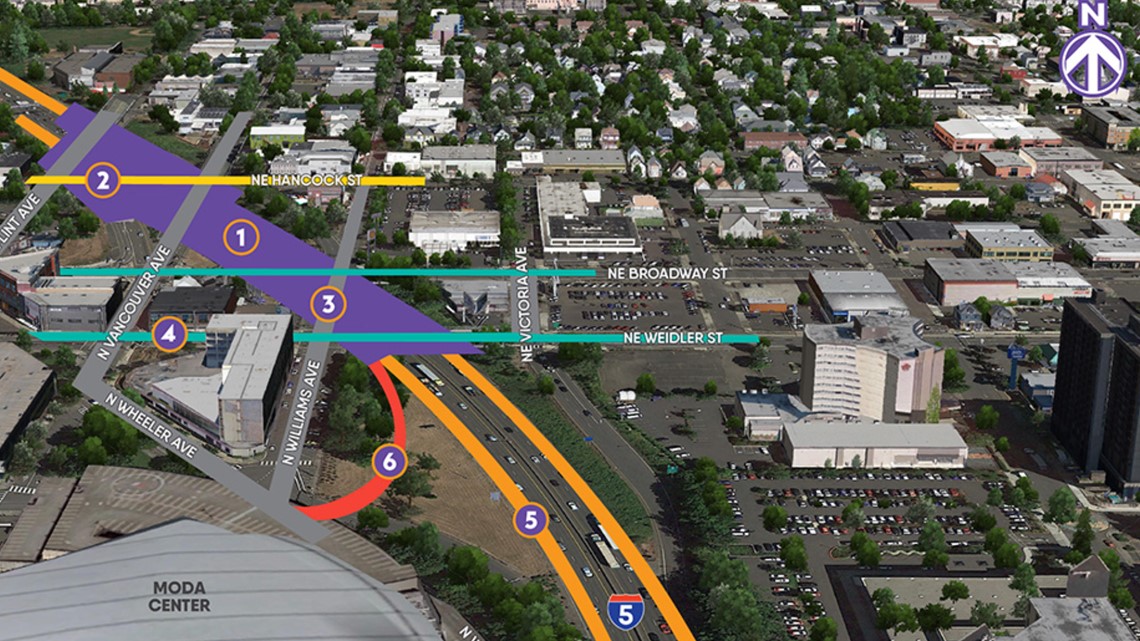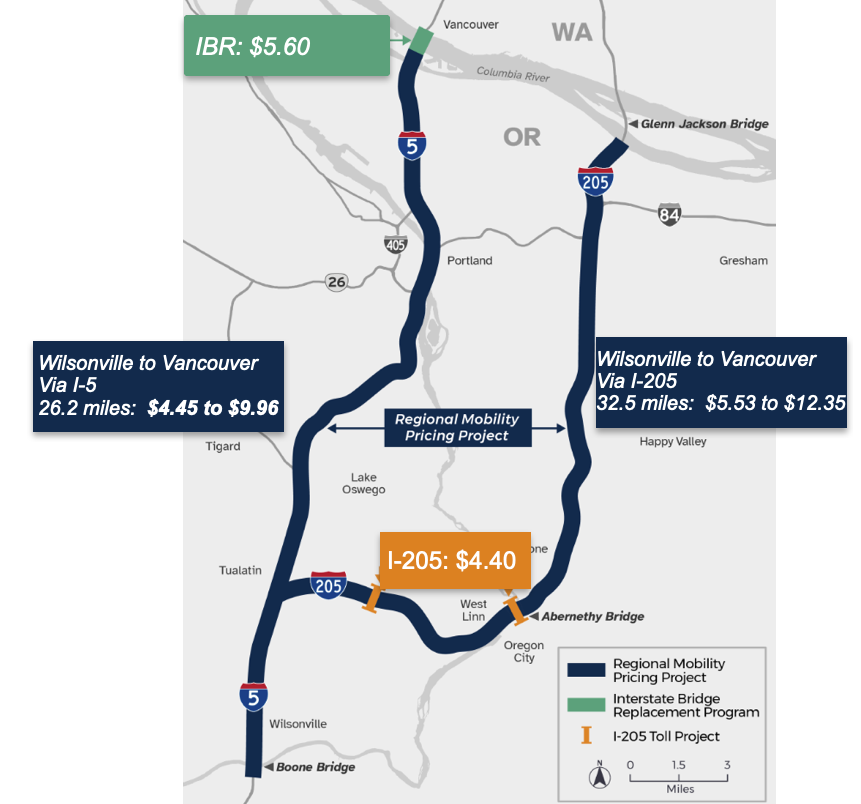ODOT says rising construction costs and a delay in the start of regional freeway tolling have created funding gaps for both the Rose Quarter and I-205 projects.
By Anthony Macuk (KGW)
June 28, 2023
SALEM, Ore. — The Interstate Bridge Replacement Program secured a key piece of funding this week to keep the project on track, but the Oregon Department of Transportation says the Portland area’s other two big freeway projects, the Rose Quarter and Interstate 205 expansions, have hit major roadblocks.
The projects have grown in scope — and therefore price — during planning, ODOT said, and freeway construction costs have risen dramatically at the same time. Gov. Tina Kotek also recently ordered a pause on tolling until 2026, impacting a planned funding source for both projects.
ODOT said it has developed a new draft plan to address the funding gaps, with alternative options to present to the Oregon Transportation Commission on Wednesday before seeking feedback from Kotek.
The draft plan says ODOT is rearranging the projects into a long-term phased approach that “aligns with the financial realities.” In practice, the idea appears to be to salvage the first part of the I-205 project by shelving the rest of it, along with the entire Rose Quarter project, until more funding becomes available.
I-205 slimmed down
The new plan would complete the first phase of the I-205 project but “indefinitely postpone” the second phase because of the delayed tolling revenue, ODOT said. Phase 1 includes widening and seismically strengthening the Abernethy Bridge and is already under construction.
As originally conceived, Phase 2 would add an additional travel lane in each direction along a 7-mile stretch of the corridor to the west of the Abernethy Bridge, and it would include seismic upgrades or replacements to nine other bridges along the corridor including the Tualatin River Bridge.
The project also includes the construction of automated tolling sensors on the Abernethy and Tualatin River bridges. Tolling would still move forward on the Abernethy Bridge in 2026 under the new plan, but the sensors on the Tualatin River Bridge would be delayed along with the rest of Phase 2.

The new plan document says the cost estimate for the overall project has risen to about $1.3 billion:
- $662 million for Phase 1
- Up to $600 million for Phase 2
- Up to $100 million for the tolling component
ODOT did present one alternative scenario that would salvage the Tualatin River Bridge replacement instead of leaving it in limbo with the rest of Phase 2. Doing so would create a “minimum viable earthquake ready corridor” along I-205, the agency said, but it would require pulling an additional $125-175 million from Statewide Transportation Improvement Program funding over the next five years, potentially sidelining other seismic upgrade projects.
The I-205 tolls are planned as a test run of sorts, with tolling eventually set to expand to all of I-205 and Interstate 5 throughout the Portland metro area as a funding mechanism and congestion pricing tool.
The broader tolling plan is still on track because the planning and design work is fully funded and the project will pay for its own construction cost through tolling revenue, according to ODOT. Environmental review and design are expected to be completed by early 2025, and tolling could begin in late 2026.

Rose Quarter shelved
The new plan says ODOT expects to receive about $560 million for both the I-205 and Rose Quarter projects from an allocation in a 2017 state transportation package — the same bill that authorized tolling as an additional funding source.
Delaying tolling to 2026 means there will be less toll revenue available, ODOT said, forcing it to shift more of the legislative funding to the I-205 project to keep it at least partially on track.
Meanwhile, the estimated cost of the Rose Quarter project has grown to a range of $1.5 billion to $1.9 billion, according to the report. That’s up from an estimate of about $1.2 billion to $1.4 billion 2021, and it leaves the project facing a funding gap of at least $1.3 billion to complete design and construction work.
The new plan presents three options for the project, all of which would involve completing the federal environmental review process and at least some of the design work, but without acquiring right of way or starting construction.
The cheapest option would leave all of the project’s design components unfinished in order to save $15 million that could help with shortfalls on the I-205 project, ODOT said, while the most expensive option would finish all design work but would require an additional $40-60 million in State Transportation Improvement Program funding.

The controversial Rose Quarter project aims to fix a regional bottleneck by widening I-5 from four lanes to six between the Interstate 405 and Interstate 84 junctions in inner northeast Portland.
It would also add a lid above part of the freeway to reconnect the historically Black Albina neighborhood, which was cut in two by the freeway’s original construction.
The original plan drew criticism due to the minimal size of the lid, and ODOT switched to a wider and stronger cover design in 2021, capable of supporting larger buildings on top.


